张业法,戊子岁生于齐鲁,自幼承家传,兼修诗书礼乐,琴棋书画,广涉文艺,早年根基深厚。年方弱冠,博览群书,学问渊然,慕古人之道,志在博采。甲辰岁,应征从戎,专任文宣,以书艺扬名军中。乙丑年,转入齐鲁,肩负书协重任,然笔耕不辍,勤研精思,求索不息。幼年临帖,颜柳为基,钟繇为韵。及壮,遍习碑版,研古而不泥,渐厚根基。二十弱冠,始悟行草,取法二王,昼夜不辍,凝神习之。古人云,习者众,得者寡,遂屏绝尘俗,孤灯潜修,欲脱尘泥,铸其风骨。

书道如冶铁,需百炼方成。张氏非唯临摹,更广参书论,探微入妙。草书尤钟张怀,常伴《书谱》《十七帖》左右,心摹手追。草法之妙,气脉通贯,断而不断,连而不连,数年之间,终有所得。世学二王者多,得其形而失其神,张氏参悟其中,自成一脉,古韵新风,苍茫自在。数十载光阴,张公行遍碑林,手不释卷,二王法度潜研,碑帖精义默参。尤嗜明初《淳化阁帖》拓本,临池不倦,心追手摹,笔法萧散,胸藏丘壑,笔底烟云。作品清逸宽博,含而不露,神韵自然,若天籁自手心流溢,清幽浑厚,气象浑然。
其笔致清劲,风神朗逸,结体险峻,章法森严。运锋游走,如行云流水;提按分明,若登山涉水。笔意纵横,刚柔相济,古意浑然,天机自显。或连或断,似断还连,欲留还走,意境深远。业法常言:“山川奇秀,自然无拘。书道如斯,守正而变,脱俗乃生。”于法中求险,于险中求稳,神与物游,心与道契。大幅行草,气势如虹,奔放不羁,静中有动,动中有静。观者或如临江河浩荡,或若登高远眺,心随笔动,神与境融。斯道妙境,欲传难述,唯在静观默契,方得其真。
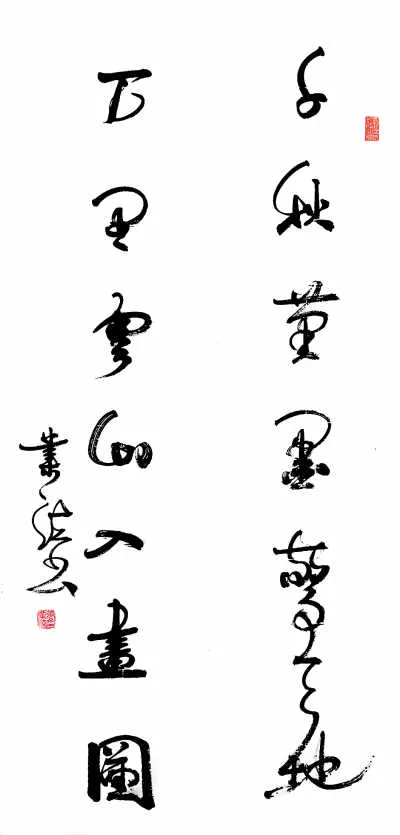
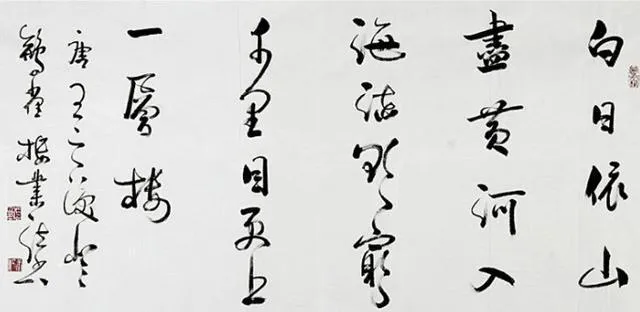
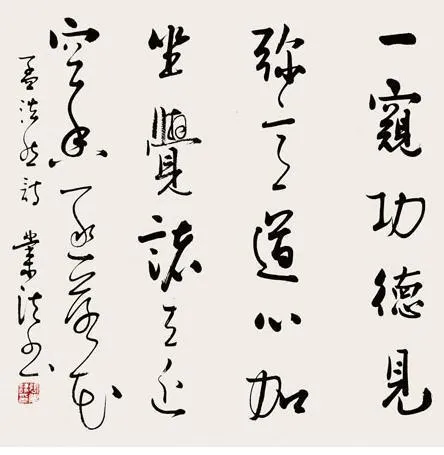
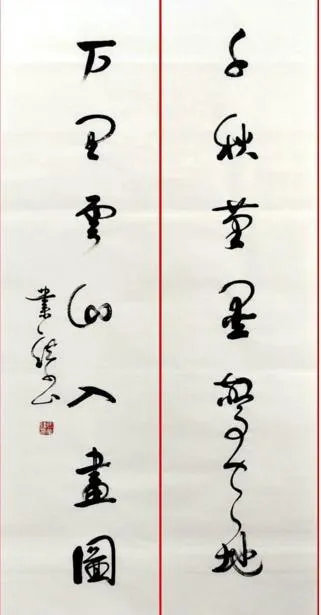
近岁,张业法静研古帖,探笔墨之微,揣章法之妙,意在化古出新。其《般若波罗蜜多心经》一卷,二百六十余字,笔势纵横,墨韵清和,锋藏而气敛,古意自生。运笔提按有致,心手相应;线条遒劲而不失柔韧,笔断而气连,随势而变,时而锋芒隐现,时而气象雄放。行笔间,如巨鹏搏风,意态逸然;换行之处,气韵贯通,神形兼备。通篇沉厚古雅,意韵悠远,若清泉潺潺,若流云舒卷,意到气至,古今交融,观者莫不心折。
书道本于功、学、境,三者不可或缺。晋之逸少,唐之真卿,乃至今之沙、林、启、魏,皆以苦学精研,方得其道。观张业法笔墨,法度严谨,古意流转。行草纵横如风,收笔稳如泰山,起止有常,韵律分明。尤擅硬毫中锋,笔走龙蛇,力透纸背。字形大小、敧正,随情而变,不拘一格,飞白巧然,神采内敛而气势奔放。疾行之笔,若奔雷掣电;舒展之笔,如松间清风,快缓相济,意态纵横,雄浑而秀丽,端庄而飞扬。此种气象,源于心手双畅,形神兼顾。功深而学厚,气定而意和,情景自成。张业法行笔,若山川舒卷,似江海吞吐,变幻无穷,韵味难尽。斯境斯妙,非言可尽,唯有静心观悟,方得其神理。


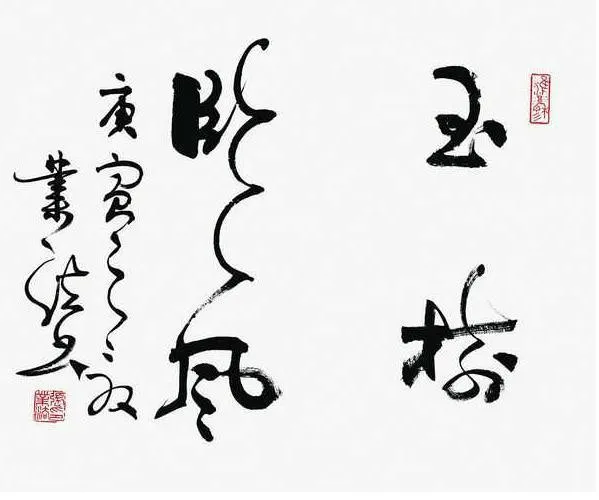
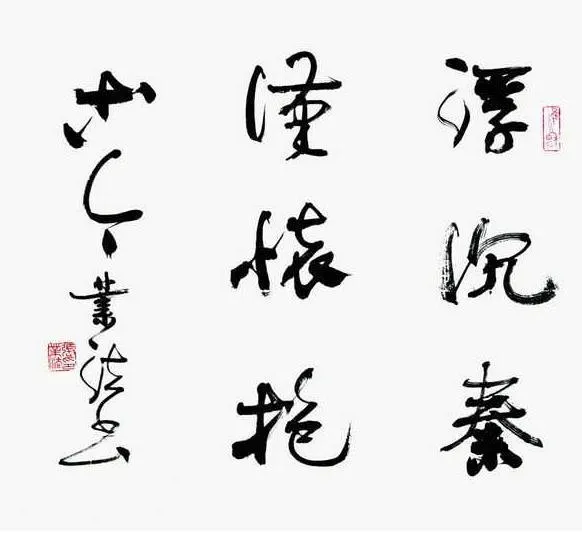
时下书坛,风格纷呈,有宗帖者,有崇碑者,亦有碑帖兼修者,各擅其长。张公融古铸新,碑帖并蓄,自成一派,雄逸神纵,清雅灵秀。其书风儒雅自适,书卷气浓,内蕴厚重,沉稳中蕴奇峭。数十年如一日,志坚行笃,传古开新,为世所推重。
业法之道,不止于笔墨功力,更重学问修养,品格涵养。其书作如其人,温润含蓄,气象清朗。数十载砥砺,凝聚心血智慧,笔墨间见浩然之气,作品中含古今之意。心境与书境相合,艺道与人道相融,若云卷舒,若风徐来,韵致悠远,直抵人心。

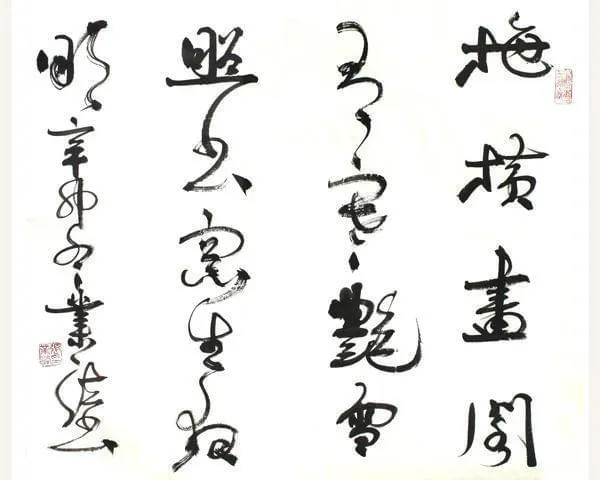
Zhang Yefa: Exploring the Finesse of Art, Attaining the Sublime in Calligraphy
Zhang Yefa was born in the Year of Wuzi in Qilu. From a young age, he inherited his family’s legacy, studying a wide range of subjects, including poetry, literature, music, calligraphy, chess, and painting, laying a solid cultural foundation. By the age of twenty, he had extensively readical works and was deeply influenced by ancient masters, with a desire to learn from all traditions. In the Year of Jiachen, he enlisted in the military, serving as a cultural officer, gaining recognition for his calligraphy skills. In the Year of Yichou, he returned to Qilu, assuming a key role in the provincial calligraphers' association. Despite his official duties, he continued his calligraphic practice diligently, always in pursuit of the art’s deeper essence. As a young man, he studied Yan Zhenqing and Liu Gongquan for structure, and Zhong Yao for rhythm. With age, he expanded his studies to inscriptions and ancient scripts, refining his foundation. At twenty, he began to understand the essence of cursive script, following the tradition of the “Two Wangs,” practicing day and night, immersed in his art. As the ancients said, many study, but few attain mastery. He isolated himself from worldly distractions, burning the midnight oil, striving to transcend the mundane and forge his own style.
The art of calligraphy is like refining iron; it requires countless temperings to achieve mastery. Zhang did not merely copy ancient scripts; he delved deeply into calligraphy theories, exploring subtleties with great precision. He was especially fond of the cursive scripts of Zhang Xu and Huai Su, often accompanied by Calligraphy Manual and Shiqi Tie. The essence of cursive script lies in the flow of energy, where breaks are continuous and connections seem interrupted yet remain unbroken. Over several years, he gained deep insight. Many study the "Two Wangs" but grasp only the form without capturing the spirit. Zhang, however, found his own path, blending ancient charm with new vitality, achieving a natural grandeur. Over decades, Zhang traversed the inscription fields, never parting from his study of the “Two Wangs.” He particularly cherished the Ming dynasty’s early Chunhua Pavilion rubbings, tirelessly practicing, with a mind embracing mountains and rivers, and a brush infused with clouds and mist. His works exhibit a broad and elegant simplicity, understated yet rich with spirit, like the celestial music flowing from his fingertips, serene yet profound, embodying a harmonious atmosphere.
His brushwork is clear and vigorous, his style elegant and unrestrained, with compositions that are steep and rigorous in structure. The brush moves fluidly like clouds drifting across the sky; his pressing and lifting of the brush are distinct, as if climbing mountains and crossing waters. His strokes flow freely, blending strength and gentleness, with an inherent ancient spirit naturally revealed. Lines connect or break, seemingly disconnected yet subtly linked, creating a profound sense of space. Zhang often says, “The beauty of mountains and rivers lies in their boundless freedom. The way of calligraphy is the same: one must uphold tradition while seeking innovation, only then can one transcend the mundane.” He seeks challenge within the rules and stability within the challenge, letting spirit roam freely and mind unite with the Dao. His large-scale cursive works are as majestic as a rainbow, unrestrained and bold, with movement in stillness and stillness in movement. Viewers may feel as if they are standing by a vast river or looking out from a high peak, their hearts moving with the brush, their spirits merging with the scene. Such sublime states are hard to express in words; they can only be comprehended through quiet observation and mutual resonance.
In recent years, Zhang Yefa has quietly studied ancient calligraphy, probing the subtleties of brush and ink, contemplating the intricacies of composition, seeking to blend the ancient with the new. His transcription of the Heart Sutra, with over 260 characters, displays sweeping strokes and harmonious ink tones, with concealed sharpness and restrained energy, exuding a natural ancient charm. His brushwork is precise, aligning heart and hand; the lines are strong yet flexible, with interrupted strokes maintaining a connected energy, adapting naturally to the changing composition. Sometimes sharpness emerges, other times grandeur unfolds. His brush moves like a giant bird soaring in the wind, with an untroubled grace; even the transitions between lines are seamless, with spirit and form perfectly unified. The whole piece is dignified and elegant, with a deep and distant charm, like a clear spring flowing or drifting clouds unfolding, achieving an integration of ancient and modern. All who behold it are deeply moved.
The art of calligraphy is rooted in skill, knowledge, and insight; none can be lacking. From Wang Xizhi of the Jin dynasty to Yan Zhenqing of the Tang dynasty, and more recently, Sha Menghai, Lin Sanzhi, Qi Gong, and Wei Qihao, all achieved mastery through diligent study and practice. Observing Zhang Yefa’s brushwork, one sees strict adherence to principles and a seamless flow of ancient style. His cursive is swift and unbound like the wind, while his final strokes are as steady as Mount Tai. He starts and ends with consistency, with a distinct rhythm. Particularly adept with a hard-tipped brush, his strokes glide like dragons and snakes, with power penetrating the paper. His characters vary in size and tilt, adapting to the flow of emotion, unconfined by form, with skillful use of flying white, restrained spirit, and powerful momentum. Rapid strokes are like thunder and lightning; leisurely strokes are like the wind through pines. He balances speed and slowness, with a majestic and graceful presence, dignified yet soaring. Such an atmosphere arises from the smooth alignment of heart and hand, balancing form and spirit. Profound skill and extensive learning provide a stable foundation, allowing a harmonious integration of intent and expression, where emotion and scene naturally merge. Zhang’s brush moves like unfolding mountains and rivers or the ebb and flow of the sea, ever-changing and boundless in charm. Such a realm is beyond words and can only be grasped through quiet contemplation.
In the contemporary calligraphy world, diverse styles abound. Some adhere to model script, some revere steles, while others combine the two, each with their own strengths. Zhang Yefa merges the ancient with the new, integrating stele and script traditions, creating a unique style that is majestic yet unrestrained, elegant yet lively. His calligraphy exudes scholarly grace, rich with the spirit of literature, with a deeply rooted foundation and a balance of stability and innovation. For decades, he has remained steadfast and dedicated, both preserving tradition and pioneering new paths, earning widespread respect and admiration.
Zhang Yefa’s approach to calligraphy is not limited to technical skill; it emphasizes scholarly cultivation and moral refinement. His works, like his character, are gentle yet profound, with a clear and radiant presence. Decades of dedication have infused his brush with his heart and wisdom, revealing a righteous spirit in his strokes and a blend of ancient and contemporary sensibilities in his creations. His inner state aligns with his calligraphy; his artistic path merges with his personal one, like clouds drifting and unfolding, like a gentle breeze, with a far-reaching charm that touches the heart.
责任编辑:苗君